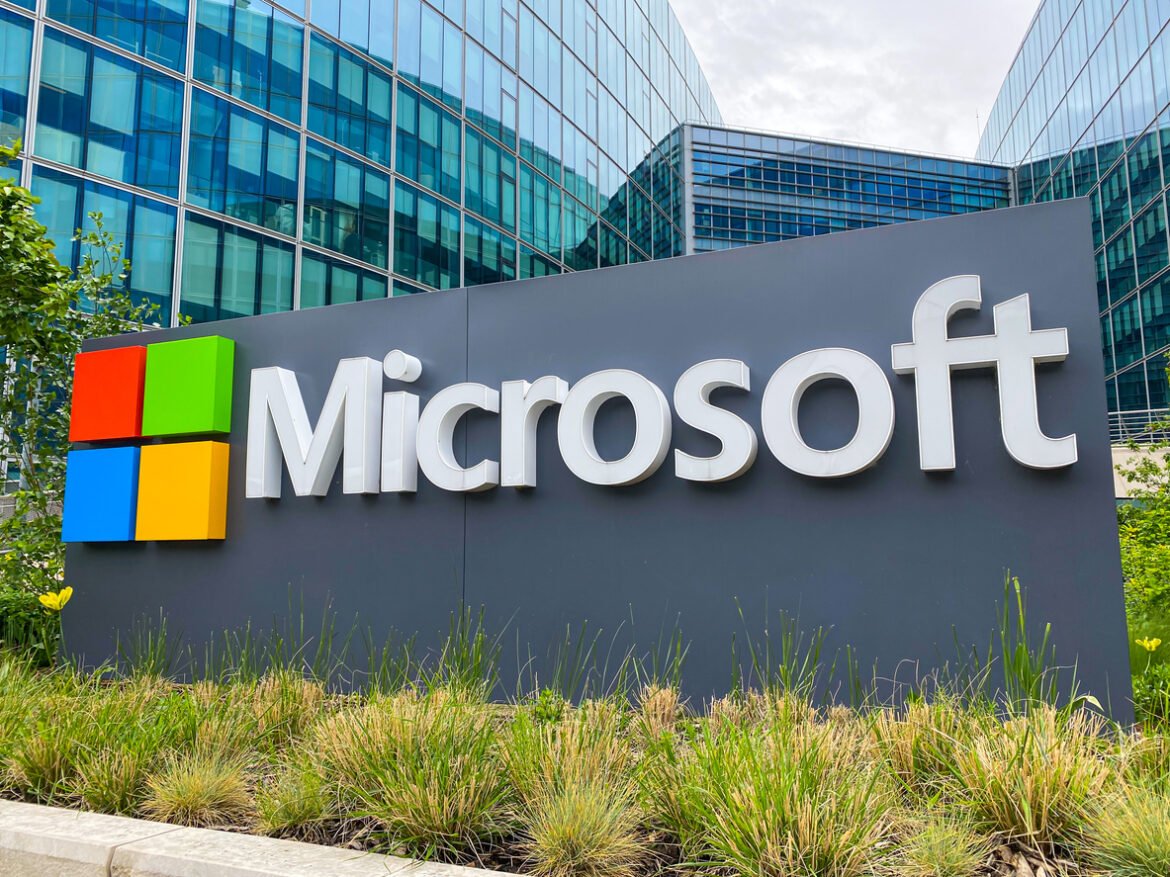Microsoft Corporation (MSFT)
A Gross Assessment for Potential Investors
Microsoft Corporation, or MSFT as it is frequently referred to, is one of the dominant companies in the technology sector and perhaps the most recognizable. Founded in 1975, Microsoft has evolved from its early days as a software publisher into a multinational technology company, offering a range of products and services across business, consumer and, cloud computing sectors. In this article, we take an in-depth view of the history of the company, significant milestones, its key policies and finances, while paying attention to information that potential or existing investors may find useful.
Company Bio
Established: April 4, 1975
Founders: Bill Gates and Paul Allen
Headquarters: Redmond, Washington, USA
Chief Executive Officer: Satya Nadella (since 2014)
Ticker Symbol: MSFT (traded on NASDAQ).
Adoption: Over $2.4 trillion (As at 2024).
Revenue: $211.91 billion (Fiscal Year 2023).
Employees: Roughly 220,000 (2023 estimation).
According to estimates, Microsoft’s primary concentration is in the industries of software design, development, and manufacturing. It also pursues the business of operating its cloud platform, providing technology and AI services, and distributing consumer and industrial electronics. It is one of the leaders in the stock market and has unrivaled segments especially in the NASDAQ index.
History of Microsoft
Microsoft is a company that was brought to life by Bill Gates and Paul Allen with the aim of making computing accessible to everyone. It was in the early 1980s that the company made its big break when it signed up as the operating system provider for IBM’s first PC. MS-DOS was created by Microsoft and this system became the stepping stone to the success of the company in the future. In 1985, the company launched Windows, which was a graphical improvement on MS-DOS. Eventually, MS-DOS developed into the most widely used operating system in the world.
The 1990s and early 2000s saw conflicts in the region where Microsoft launched Microsoft Office. They had software programs like Word, Excel, and PowerPoint which aided their expansion into the business arena. These software programs went on to be used worldwide and further increased Microsoft’s dominance over the corporate and consumer markets.
Microsoft underwent a drastic change in the 2010s which was made evident under the leadership of Satya Nadella who became the CEO of Microsoft in 2014 succeeding Steve Ballmer, who had a different vision for the company. Nadella retargeted the business towards cloud computing, AI and software as a service model that reshaped the way the business operated. Cloud services became part of Microsoft’s core business strategy with its platform called Azure.
Key Products and Services
However, in two segments, Microsoft’s product offering extends from the home markets to the ones for enterprises. Some of the most important products and services are listed below.
Windows Operating System
Over the years, Microsoft has consistently highlighted Windows as a key component of their products. Windows XP to Windows 11 Version is the current windows which is latest in the market.
Microsoft Office/365
Microsoft softwares are very widely used business tools and integrated into the business systems of the organizations. Microsoft Office includes Word, Excel and PowerPoint, on the other side Office 365 includes a subscription for these office applications hosted on the cloud platform.
Azure
Microsoft cloud service is reportedly a fastest growth vertical of the company and Azure provides numerous cloud services including storing data, machine learning, artificial intelligence and business exclusive sourced cloud-based apps.
Microsoft acquired LinkedIn for $26.2 billion in June 2016. LinkedIn is the largest platform for professional networking in the world and it became a very important value for the social media presence of Microsoft and its enterprise services.
Xbox
The Company generated 10 Billion through then Xbox gaming consoles and other offerings which include a subscription gaming service known as Xbox Game Pass.
Surface Devices
Microsoft designs and sells several types of personal computing devices including tablets laptops and hybrid devices marketed under the Surface brand.
Dynamics 365
This is an ERP and CRM software application that is hosted in the cloud and is designed for Business centers in interaction with consumers.
Business Strategy
The latest business focus for Microsoft has been virtually centered on cloud computing, SaaS and AI. With the demise of one-off software licensing and the movement to subscription-based models, there has been a level and increasing income, in particular from Microsoft 365 and Azure.
Cloud Dominance
Competing with the likes of Amazon Web Services, Microsoft Azure ranks among the world’s top two cloud services. The cloud alone raked in more than 91 billion US dollars in 2023, making up almost 50% of Microsoft’s total earnings.
AI and Machine Learning
AI is one of the emerging technologies that Microsoft has heavily incorporated, mostly within their suite of cloud solutions and through the Azure AI platform. The embedding of AI into tools like Microsoft 365 and LinkedIn, however doesn’t seem to be retracting.
Gaming Expansion
With the help of the Xbox, the gaming vertical has witnessed growth and is expected to be one of the key growth drivers going forward. Following Microsoft’s recent acquisition of Bethesda’s parent company ZeniMax Media and its active bid for Activision Blizzard’s that control position it as a dominant force in the gaming market.
Enterprise Focus
Microsoft highlights enterprise services such as Azure, Dynamics 365 and LinkedIn in its growth equation. Focus to deliver cloud-based services to businesses has enabled the company to establish long-term contracts and partnerships with several organizations across industries.
Financial Performance
Microsoft has managed to deliver value in several areas. Particularly under the leadership of Satya Nadella. The picture below shows certain indicators of the company’s financial position and performance for the previous fiscal year.
Revenue Growth
The revenue figure for Microsoft for the financial year 2023 was $211.91 billion. This was an increase of 7% compared to 2022. There has been a shift in the company’s revenue mix to areas that promise quicker expansion such as the yield of Azure, which increased by 23%.
Net Income
For the financial year 2023, Microsoft reported net income of $72.55 billion, representing a healthy 34% profit margin. Generally, the company has been able to grow high margins as the company’s cost structure is efficient and operations of selling cloud & software have high margins.
Earnings per Share (EPS)
According to the reports for 2023, diluted earnings per share for Microsoft reached $9.78 compared to $9.21 for 2022. This is as a result of strong profit growth and share buybacks.
Microsoft Shareholder Value Enhancement
Microsoft appeals greatly to investors who are in favor of paid dividends, almost 0.9% currently. Aggressive share buybacks as well as paying out dividends has always been the history of the company to return value to its shareholders.
Competitors in the Market
Microsoft is worth over $2.4 trillion as of October 2024 which puts it among the top companies globally in terms of its market cap. Apple, Alphabet, and Amazon are other companies with a competitive market value in the technology industry.
Investment Outlook
There is a compelling investment case for Microsoft by both growth and income investors. Microsoft has been sustained in the last decade due to the rapid transition to a cloud-first business perspective. There is an incredible potential in continuing Hughes AI platform development, cloud-native Saa.S for growing businesses, and gaming, all targeting growth areas where Microsoft is leaders.
Investor Strengths
Multiple Revenue Streams: Microsoft touches a multitude of high growth revenue segments from software to hardware, cloud and gaming.
Strong Operational Metrics: Microsoft has impressive operating margin, strong cash generation ability, and does have a healthy financial balance too.
Innovative and Visionary: Universal AI, cloud and gaming business allows Microsoft to strategically invest while remaining competitive in the fast-paced evolving tech markets.
Risks to Consider
Complications with the Cloud: Despite Microsoft being the top player in the market, it encounters sharp rivalry from AWS and Google Cloud.
Regulatory Risks: Given the fact that Microsoft is one of the largest companies in the world, it has faced a lot of regulatory scrutiny in relation to its mergers and acquisitions.
Conclusion
Microsoft still is one of the best technological corporations with the ability to listen and respond to market trends while maintaining growth. With the emphasis on perpetual improvement, cloud computing, and artificial intelligence, Whiz’s investors would not be disappointed considering the long-term worth of the company. For institutional or retail traders, MSFT stock will be one of the stocks



